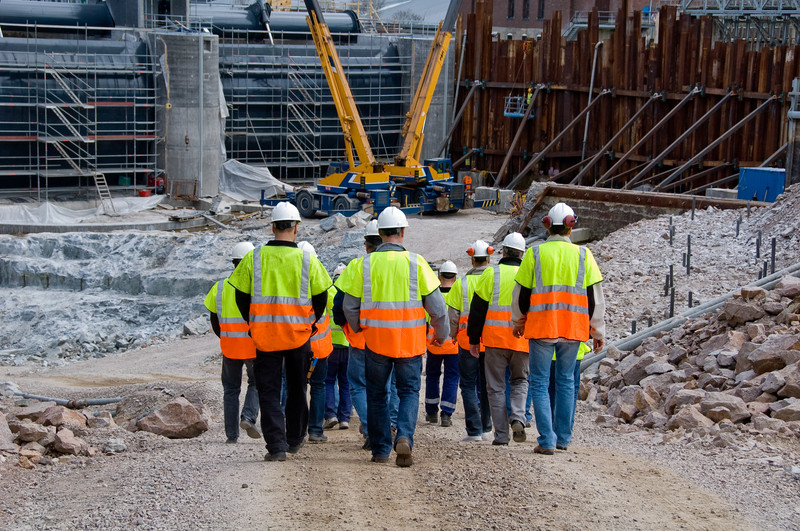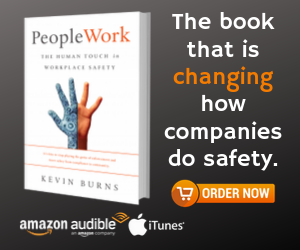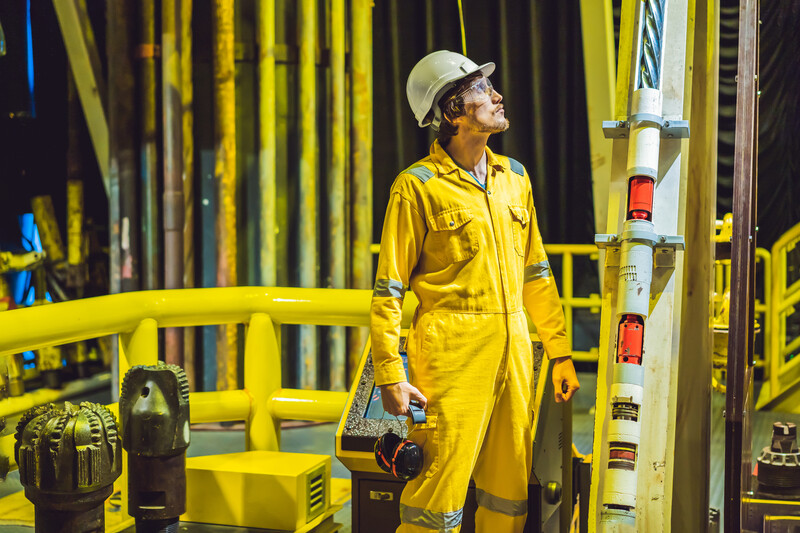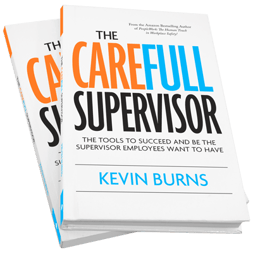Why is it that one company can struggle with safety performance while another company, in the same industry, easily excels at safety performance? The answer is in what happens on the ground – with front-line supervisory.
Read MoreLeadership Skills Are Needed to Improve Safety
Posted by Kevin Burns on Jan 27, 2021 11:45:00 AM
What Is Safety Buy-in? And Why It’s Important.
Posted by Kevin Burns on Dec 2, 2020 1:56:06 PM
In safety, there are no trade secrets. That’s because the rules are the same in each industry. No one company gets an advantage over another because of safety regulations. No company is handed a better, less restrictive set of rules to operate by. The playing field is level. The rules are the same across each industry.
So why do some companies find it so easy to get their employees to follow safety protocols and other companies struggle? Why are some supervisors able to more easily rally their crews around safety and other supervisors can’t seem to get their people to even wear their safety glasses?
The answer is buy-in.
Read MoreThe One Strategy to Supervisor Success in Safety
Posted by Kevin Burns on Nov 25, 2020 1:12:57 PM
My first paid job was as a 12-year-old salesman on a Dickie Dee ice cream bicycle. I worked on commission with no hourly wage. In 1973, popsicles cost a nickel and ice cream drumsticks were a quarter. The ice cream bike was a single speed, 3-wheeler that weighed 600 pounds fully loaded, and my route was a hilly, blue-collar town in Renfrew, Ontario.
Like most families in Renfrew, mine didn’t have much money. My dad was an office manager at a tire shop and my mom was an elementary school teacher. I was working to save up for a 10-speed bike that cost $125.
I quickly learned what time workers at the local factories took their breaks. Most of them had no air conditioning, so a frozen treat always hit the spot.
I noticed the camaraderie those factory workers shared. It wasn’t uncommon for one guy to step up and say, “We’ve got five guys here, so it’s five cones on me.” It seemed to me that whatever they were doing, they were in it together.
The following year I worked part time in a golf course pro shop. My boss, the golf pro, was an intense manager who was insistent on routines, procedures, and presentation. Everything had to be done just so, no surprises.
Then as a young teenager, I worked at our small town’s first radio station. I emptied trash cans and helped out wherever I could. I learned that the best announcers were the ones who connected with their audiences on a personal level.
The job started me on an 18-year career in broadcasting doing jobs from sales rep to on-air announcer (11 years as a morning-man) to supervisory and management positions.
Through all of those early jobs, I found that one thing trumped everything else— and that one thing was relationships.
Read MoreTop 3 Areas To Influence Safety
Posted by Kevin Burns on Nov 18, 2020 1:15:00 PM
The frontlines are where the largest numbers of employees gather each day. It’s where the greatest number of supervisors do their jobs, where the greatest amount of activity is. It’s where the most problems happen and where the largest numbers of safety incidents occur.
At the frontline is where the morale and reputation of the organization is created and upheld. It’s at the frontline where effective supervisory skills, clear communications, and employee buy-in to safety are needed most.
Companies are spending too much time and too much money with inconsistent and ineffective communications trying to engage their employees and supervisors in taking ownership of the safety program.
When faced with issues like lack of employee and supervisory buy-in to safety, the conventional approach is to double-down on safety rules and process enforcement. But you don't fix recurring safety issues by piling on more safety.
Instead, what is needed are new innovations and approaches to build employee and supervisory ownership of safety. And, you to do that you must clarify your safety communications and messaging.
Read More4 Strategies for Better Employee Participation in Safety
Posted by Kevin Burns on Nov 11, 2020 1:15:00 PM
Once upon a time, all you needed to do was threaten people to get them to comply with safety’s rules and procedures. And you would get blind compliance. They wouldn’t like it, but they would do it for fear of losing their jobs. And it made for a terrible place to work.
Then, we evolved (we think we did but no, we didn’t) to safety meetings replete with gory photos and dismembered limbs. Injury-survivors told their 30-year-old “don’t do what I did” stories (it’s hard to believe that these old and ineffective practices are still being used today in some workplaces).
Bad and ineffective management felt the need to resort to scare tactics to coerce their employees into being safe. There is a certainly irony in scaring workers into being safe.
Read MoreSafety’s Top 3 Challenges
Posted by Kevin Burns on Nov 4, 2020 1:15:00 PM
In preparing a virtual presentation for the members of an electrical utilities association, I asked the organizing committee to survey their members with one question: what is the biggest issue you would like to overcome in safety in the next 12 months?
Read MoreThe 3-Step Process to Improving Safety Culture
Posted by Kevin Burns on Oct 28, 2020 1:15:00 PM
Fifteen years ago, I was conducting a leadership workshop with a group of senior managers at an oil and gas drilling company. At one point during our meeting, one of the senior managers began lamenting the recent departure of one of their drilling rig managers to a competitor.
Three months previous, the rig manager left for another drilling company. And his departure was still being felt.
I was confused as to why there seemed to be so much concern and discussion at the loss of a single rig manager still after ninety days. Then I was informed that over the three months following the rig manager’s departure, each of the 8 members of that rig manager’s team had also handed in their resignations. All left to join their old boss at the new company.
The company hadn’t lost just one person. They had lost nine – the whole crew.
My first thought was, “wow, we need to create more of those kinds of supervisors.”
Read MoreFocus on Safety Benefits, Not Numbers
Posted by Kevin Burns on Oct 14, 2020 1:15:00 PM
Numbers don't sell anything.
The furnace in our house is 96.1% efficient. The water softener regenerates every 1000 gallons. The home office workspace is 350 sq.ft. The sound-reducing acoustical-drywall treatments have reduced ambient noise from 47db to 26db. Converting to LED bulbs throughout the house reduced energy consumption by 25% in the first month. Want to buy a house?
Numbers don’t sell houses. Mileage numbers don’t sell cars. You don’t lead with numbers to sell anything. In fact, in a Real Estate listing, you will find the numbers in the footnotes. Vehicle mileage and fuel economy numbers are found on the back page of the brochure.
Truthfully, people buy emotionally and justify their decision with logic and facts. People buy-in to things and ideas that will improve their lives in some way (safety included). They use numbers to support their decision.
Let's use the example of Real Estate. A compelling Real Estate listing does not lead with numbers. It leads with a quality-of-life benefit statement - something that evokes an image or an emotion.
- Skip the commute and work from home in one of two offices.
- Enjoy expansive mountain views on three floors.
- Relax with a glass of wine watching the most spectacular sunsets.
- Take advantage of the peace and tranquility of near-country living.
When you lead off with benefits to the buyer, you create a more compelling statement. These are the kinds of images people want to envision when they are looking for a place to settle their family. The best statements use words that evoke a vision, a feeling, an emotion.
Read MoreYour Next Ideal Supervisor Must Include These Traits
Posted by Kevin Burns on Oct 7, 2020 1:30:00 PM
A supervisor who cares about their team, cares about their safety.
A 20-year trades ticket or 20 years of job experience essentially becomes useless the moment a frontline employee becomes a supervisor. Not that 20-years of experience will no longer be needed, but largely a supervisor does not do the frontline work anymore.
They now supervise frontline work. And that requires a completely different skillset.
Effective supervisors need coaching skills, communications skills, people skills, management skills, leadership skills. Eighty percent of a supervisor’s day is spent coaching, communicating, managing, leading, and dealing with people.
So, when companies promote one of their frontline employees into a supervisory position, are they setting that supervisor up to win?
Read MoreWhy do we expect they know what to do in safety?
Posted by Kevin Burns on Sep 30, 2020 1:14:00 PM
We promote frontline employees into supervisory positions without ensuring they have skills development in coaching, communications, safety, and empowerment. And then we expect that they will know exactly what to do?
Fifteen years ago, while awaiting a flight, I had a conversation with a frontline supervisor who was working at an oilsands site in Northern Alberta. John had a commanding presence with his loud, gravelly voice. He had been supervising a team of 16 for several years at that time. He was proud of the work he did and prouder of his team.
“I have my electricians’ ticket, my plumber’s ticket, and a steamfitter’s ticket,” he beamed. “My dad always said to me that they can take your job, but they can never take your paper. As long as you have your paper, you can always land somewhere.”
“I tell my team to get paper for themselves. To become the best in their field because when you’re the best, you’re more valuable,” he smiled. “And I want my guys to not just be looked after, but to exceed me.”
John also admitted that since becoming a supervisor, he didn’t use much of the knowledge gained from getting his tickets. He knew that the skills he needed most of all were good coaching skills, a caring demeanor, good communication skills, and a genuine desire to help his team exceed even his own skill-level.
Read More












